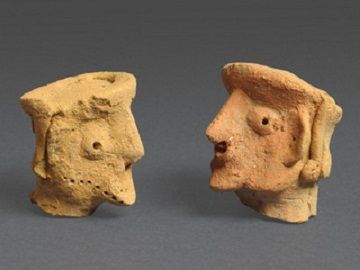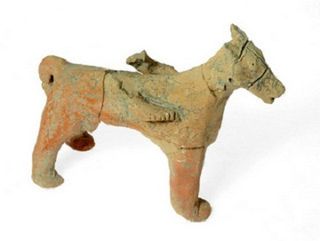Animal Figurines Found in Ancient Israel Temple

Just outside of Jerusalem, archaeologists have discovered a cache of vessels and figurines inside a 2,750-year-old temple that could provide a rare window into religious rituals of the period, the Israeli Antiquities Authority (IAA) announced.
The finds were uncovered at Tel Motza, an archaeological site being excavated ahead of the expansion of Highway 1, the main road connecting Jerusalem and Tel Aviv. The dig revealed part of a large building, believed to be a temple, and objects that date back to the era of the First Temple, which, according to the Hebrew Bible, was constructed by King Solomon in the 10th century B.C. and then destroyed 400 years later.
"The ritual building at Tel Motza is an unusual and striking find, in light of the fact that there are hardly any remains of ritual buildings of the period in Judaea at the time of the First Temple," the directors of the dig, Anna Eirikh, Hamoudi Khalaily and Shua Kisilevitz, said in a statement.

"The walls of the structure are massive, and it includes a wide, east-facing entrance, conforming to the tradition of temple construction in the ancient Near East: the rays of the sun rising in the east would have illuminated the object placed inside the temple first, symbolizing the divine presence within," the archaeologists added. [5 Dazzling Sun Myths]
They said that they found a square structure they believe was an altar in the temple courtyard, and nearby they discovered fragments of vessels that were typically used in rituals, such as chalices, as well as figurines of human heads and harnessed animals, which still "require extensive research."
It's rare to find artifacts from this early monarchic period in buildings that appear to be temples, equipped ritual platforms, the researchers say. Similar objects found elsewhere have been attributed to domestic rituals.
"The finds recently discovered at Tel Motza provide rare archaeological evidence for the existence of temples and ritual enclosures in the Kingdom of Judah in general, and in the Jerusalem region in particular, prior to the religious reforms throughout the kingdom at the end of the monarchic period (at the time of Hezekiah and Isaiah), which abolished all ritual sites, concentrating ritual practices solely at the Temple in Jerusalem," the site's directors said.
Sign up for the Live Science daily newsletter now
Get the world’s most fascinating discoveries delivered straight to your inbox.
Follow LiveScience on Twitter @livescience. We're also on Facebook & Google+.












